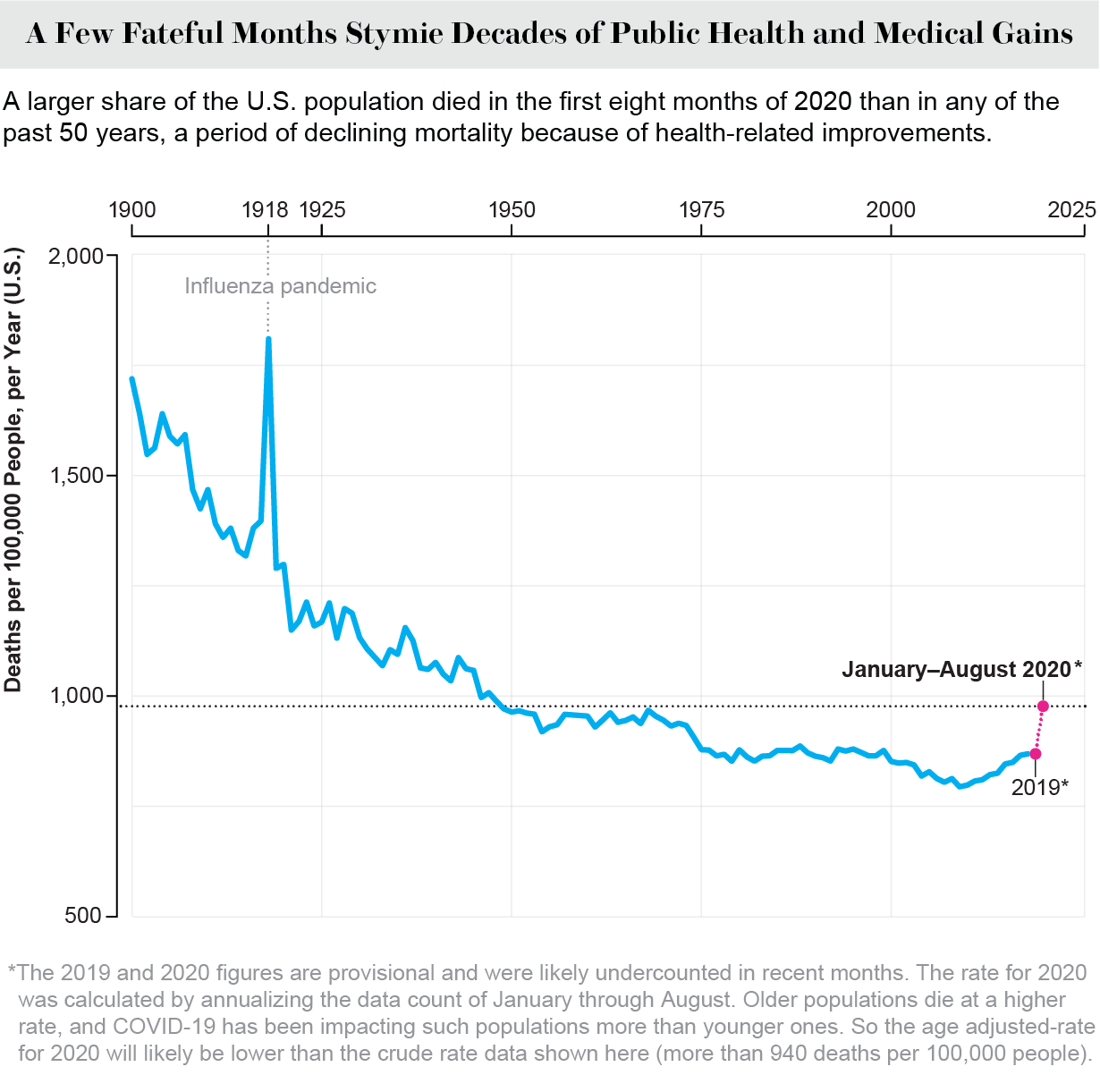
For women, the 0.8 year decline in life expectancy was attributed mainly to mortality from COVID-19 (51.2% of the decline), unintentional injuries (14.8%), heart disease (5.7%), stroke (3.5%), and chronic liver disease and cirrhosis (2.4%). For men, the one-year decline in life expectancy was attributed primarily to mortality from COVID-19 (49.5% of the decline), unintentional injuries (19.1%), suicide (3.6%), chronic liver disease and cirrhosis (3.4%), and homicide (2.5%). Other causes of death contributing to the decline in life expectancy from 2020 to 2021 include heart disease (4.1% of the decline), chronic liver disease and cirrhosis (3.0%), and suicide (2.1%).The most recent data reported by NCHS showed more than 109,000 overdose deaths in the one-year period ending in March of 2022. Drug overdose deaths account for nearly half of all unintentional injury deaths. An estimated 16% of the decline in life expectancy from 2020 to 2021 can be attributed to increases in deaths from accidents/unintentional injuries. COVID-19 deaths contributed to nearly three-fourths or 74% of the decline from 2019 to 2020 and 50% of the decline from 2020 to 2021. The declines in life expectancy since 2019 are largely driven by the pandemic.From 2000 to 2010, this disparity had narrowed to 4.8 years, but gradually increased from 2010 to 2019 and is now the largest gap since 1996. The report shows the disparity in life expectancy between men and women grew in 2021 from 5.7 years in 2020 to 5.9 years in 2021.
AVERAGE AGE OF COVID DEATHS IN US FULL
Life expectancy at birth for women in the United States dropped 0.8 years from 79.9 years in 2020 to 79.1 in 2021, while life expectancy for men dropped one full year, from 74.2 years in 2020 to 73.2 in 2021.


Life expectancy for non-Hispanic Asian people also dropped slightly in 2021 – 0.1 years – to 83.5 years, the highest life expectancy of any race/ethnic group included in this analysis. had a slight decline in 2021 of 0.2 years to 77.6 years. COVID-19 was reported as the underlying cause of death or a contributing cause of death for an estimated 377,883 (11.3) of those deaths (91.5 deaths per 100,000). After a large (4.0 year) drop in life expectancy from 2019 to 2020, Hispanic people in the U.S. From 2019 to 2020, the estimated age-adjusted death rate increased by 15.9, from 715.2 to 828.7 deaths per 100,000 population. Life expectancy at birth in 2021 was the lowest for both groups since 1995. Non-Hispanic Black people had the third biggest decline, a 0.7 year drop from 71.5 years in 2020 to 70.8 in 2021. Non-Hispanic white people in the United States had the second biggest decline in life expectancy in 2021 – one full year from 77.4 in 2020 to 76.4 in 2021. AIAN life expectancy has declined 6.6 years from 2019 to 2021. AIAN people had a life expectancy at birth of 65.2 years in 2021 – equal to the life expectancy of the total U.S. ” The report shows non-Hispanic American Indian-Alaskan Native people (AIAN) had the biggest drop in life expectancy in 2021 – 1.9 years. The data are featured in a new report, “ Provisional Life Expectancy Estimates for 2021. The 0.9 year drop in life expectancy in 2021, along with a 1.8 year drop in 2020, was the biggest two-year decline in life expectancy since 1921-1923. life expectancy at birth to its lowest level since 1996. That decline – 77.0 to 76.1 years – took U.S. Here’s how coronavirus experts are approaching this fall’s expected rise in infections.Ĭovid deaths: Covid-19 was the fourth leading cause of death in the United States last year, and covid deaths dropped 47 percent between 20.Life expectancy at birth in the United States declined nearly a year from 2020 to 2021, according to new provisional data from the CDC’s National Center for Health Statistics (NCHS).
AVERAGE AGE OF COVID DEATHS IN US FREE
It is exposing the challenges of avoiding the virus when free testing is no longer widely accessible. Rising covid-19 hospitalizations: The United States is experiencing a bump in coronavirus transmission for the first time since the public health emergency ended in May. 5, a new coronavirus subvariant, unofficially nicknamed “Eris,” is becoming a dominant strain in countries including the United States and Britain. 2.86 coronavirus variant, a highly mutated form of the coronavirus that threatens to be the most adept yet at slipping past the body’s immune defenses. Here’s what you need to know about the new coronavirus vaccines, including when you should get it.Ĭoronavirus variants: Scientists are concerned about the new BA. New coronavirus booster: The CDC recommends that anyone 6 months or older get an updated coronavirus shot this fall, but the vaccine rollout has seen some hiccups, especially for children.


 0 kommentar(er)
0 kommentar(er)
